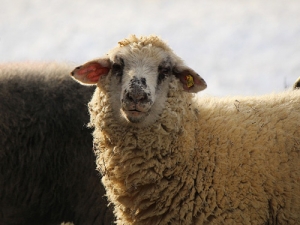Top wool advocate bales out
The conversion of productive farmland into trees has pretty much annihilated the wool industry.
 A versatile and stylish South Island selection on offer this week saw most types well supported, despite a slightly firmer NZ dollar.
A versatile and stylish South Island selection on offer this week saw most types well supported, despite a slightly firmer NZ dollar.
A versatile and stylish South Island selection on offer this week saw most types well supported, despite a slightly firmer NZ dollar, says NZ Wool Services International's chief executive John Dawson.
Compared to the last sale on November 26 the indicator for the main trading currencies was up 1.05% only having minimal impact in some quarters.
Dawson advises that compared to the last time sold on November 19, merino fleece 20.5 microns and finer were firm to 1.5% easier with 21 to 23.5 microns 1 to 3% dearer.
Mid micron fleece 24 to 29.5 microns were 1% dearer.
Compared to the sale on November 26;
Fine crossbred full fleece 32 and 33 microns were up to 5% cheaper with 34 and 35 microns 1% dearer. Fine crossbred shears were firm to 2.5% cheaper.
Coarse crossbred full fleece 36 microns and coarser were firm to 1% firmer.
All shear types remained firm.
Good colour short oddments were firm to 3% dearer.
There was well spread interest with China and Australasia dominating, supported by Western Europe, Middle East, United Kingdom and India sparingly.
The next sale on December 10 comprises about 9,200 bales in the North Island, including the wools from this week's cancelled sale.
A New Zealand dairy industry leader believes the free trade deal announced with India delivers wins for the sector.
The Coalition Government will need the support of at least one opposition party to ratify the free trade deal with India.
Primary sector leaders have welcomed the announcement of a Free Trade Agreement between India and New Zealand.
At Pāmu’s Kepler Farm in Manapouri, mating has wrapped up at the across-breed Beef Progeny Test.
More than 150 people turned up at Parliament recently to celebrate the 20th anniversary of Horticulture New Zealand (HortNZ).
Biosecurity New Zealand says Kiwis should continue to keep an eye out for yellow-legged hornets (Vespa velutina) over the holiday season.

OPINION: The release of the Natural Environment Bill and Planning Bill to replace the Resource Management Act is a red-letter day…
OPINION: Federated Farmers has launched a new campaign, swapping ‘The Twelve Days of Christmas’ for ‘The Twelve Pests of Christmas’ to…